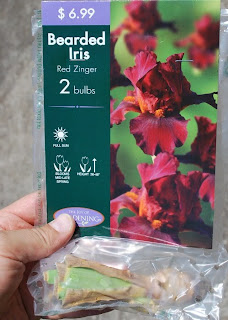Currently, figs are ripening. During September, Hardy Chicago was very productive, with a few dozen figs. Now it's Petite Negri. Vancouver has a few, but they are getting moldy before they ripen. That did not happen before. Lattarula has a few - the first year ever! They are sweet, also seem to mold slightly on the outside when ripe, but not enough to matter.
I dried some figs, as well as some grapes. They taste so much better when grown at home and dried in a food dehydrator! I had no idea.
Many grapes remain, after eating many pounds of grapes. This has been a productive year for grapes as well.
Lots of apples now. They are pretty much all ripening.
A bedroom (actually junk-room) on the southwest corner of the house will become my home office and plant room. And guest bedroom. It will have a futon/sofa, a desk, and some plant stands in the windows. I added a western window; there is already a large south facing window. I took some photos but the current computer room is too cluttered for me work with them, so they'll have to be added later. I tore out the carpet last year. The floor was badly damaged and had a large plywood patch. I replaced the patch with oak flooring taken from a closet (that is being cannabilized for a bathroom), so it is authentic to the house. I sanded off the remaining finish from the floor, and now have given it 2 coats of polyurethane. It may need a third coat. Then new baseboard, paint the walls. It has a new light fixture already.
Then I can have the cacti and other plants in the south window. I'm trying some orchids, they can go in the shaded west window.
I planted about 100 daffodils and about 100 tulips. They'll help cheer up the winter, when they start poking through the ground in Feb and March.
 Most of the tulips were an unspecified tulip mix, but one package, planted under an old cherry tree, looks like this.
Most of the tulips were an unspecified tulip mix, but one package, planted under an old cherry tree, looks like this.Daffodils included:
 Bella Estrella (Biltmore collection)
Bella Estrella (Biltmore collection) Vanilla Peach (Dutchbulbs.com)
Vanilla Peach (Dutchbulbs.com) Sunnyside Up (Dutchbulbs.com)
Sunnyside Up (Dutchbulbs.com) Replete (Dutchbulbs.com) - How did I end up with this one? I don't like "pink" daffodils!
Replete (Dutchbulbs.com) - How did I end up with this one? I don't like "pink" daffodils! Ice King (Biltmore Estates)
Ice King (Biltmore Estates)I also decided to try, once again, to grow some Lycoris.
 Lycoris squamigera, photo from wikipedia. In the past, I've made several tries to grow Lycoris squamigera. These were traditional in my family, passed down through generations in the midwest. There, they were called "surprise lilies", and since I've heard them called "naked ladies" and "resurrection lilies". The leaaves grow in the Spring, then die off. In late Summer, the flower stems grow and bloom within a few days. I would love to have some. I've tried growing them here in the Northwest, without success. Internet research suggests that I'm planting them too deep. Most instructions state they should be 6 inches deep, but those seem to be based on the 'generic' bulb size. I found other instructions stating that they should only be covered up to their shoulders. So I'll give it a try. I also added a red variety, not the traditional family variety, Lycoris radiata, and a yellow one, Lycoris aurea.
Lycoris squamigera, photo from wikipedia. In the past, I've made several tries to grow Lycoris squamigera. These were traditional in my family, passed down through generations in the midwest. There, they were called "surprise lilies", and since I've heard them called "naked ladies" and "resurrection lilies". The leaaves grow in the Spring, then die off. In late Summer, the flower stems grow and bloom within a few days. I would love to have some. I've tried growing them here in the Northwest, without success. Internet research suggests that I'm planting them too deep. Most instructions state they should be 6 inches deep, but those seem to be based on the 'generic' bulb size. I found other instructions stating that they should only be covered up to their shoulders. So I'll give it a try. I also added a red variety, not the traditional family variety, Lycoris radiata, and a yellow one, Lycoris aurea. Lycoris aurea, photo from wikipedia.
Lycoris aurea, photo from wikipedia.These have a different growth pattern, I think but the labels are contradictory.
 Lycoris Radiata, photo from wikipedia. The L. radiata already has small leaves. We'll see what they do this fall and winter.
Lycoris Radiata, photo from wikipedia. The L. radiata already has small leaves. We'll see what they do this fall and winter.That's about all for now. I hope to get this blog going better once the home office is completed.















